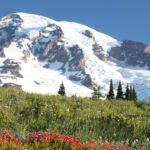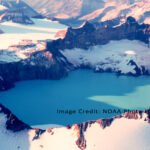Discover the beauty and adventure of Great Basin National Park in Nevada. From stunning landscapes and unique biodiversity to thrilling activities and historical sites, plan your perfect visit with our comprehensive guide.
Table of Contents
Introduction
Nestled in the quiet landscapes of eastern Nevada, Great Basin National Park is an underrated treasure waiting to be discovered. Unlike the bustling crowds of Yellowstone or the iconic vistas of Yosemite, this park offers a serene escape into nature’s wonders. Filled with geological marvels, ancient forests, diverse ecosystems, and an unparalleled night sky, it’s the perfect destination for those who cherish the beauty of solitude and the thrill of adventure. Whether you’re an avid hiker, a history enthusiast, or someone simply seeking peace in nature, this park has something special for everyone. In this blog, we’ll explore everything Great Basin National Park has to offer, from its unique attractions to tips for making the most of your visit.
Great Basin National Park, established in 1986, encompasses over 77,000 acres of stunning landscapes and ecological diversity. It is named after the Great Basin, a vast desert region that covers most of Nevada, stretching into Utah, Oregon, and California. Contrary to the arid reputation of the region, the park surprises visitors with its range of ecosystems, from sagebrush-strewn valleys to alpine meadows and glacial remnants atop towering peaks.
The park is also a haven for history and geology enthusiasts, featuring ancient bristlecone pine trees, unique limestone caves, and remnants of prehistoric settlements. The isolation of Great Basin adds to its allure, offering a chance to reconnect with nature and escape the distractions of modern life. For stargazers, the park is a dream come true, boasting some of the darkest night skies in North America.
Why Visit Great Basin National Park?
Diverse Ecosystems: Great Basin’s landscape is a tapestry of contrasts. Explore low-lying desert basins, ascend to lush forests, and reach alpine heights where snow clings to Wheeler Peak year-round. This diversity supports a wide range of plant and animal life.
Rich History and Culture: The region is steeped in history, from the ancient Native American tribes who first inhabited the area to the miners and settlers who later left their mark. You’ll find fascinating remnants of their lives scattered throughout the park.
Stargazing Paradise: The park’s remote location means minimal light pollution, making it one of the best places in the country for stargazing. Visitors can marvel at the Milky Way, shooting stars, and planets with unparalleled clarity.
Recreational Opportunities: Whether you enjoy hiking, camping, or simply taking in the scenery, the park offers activities for everyone. Its tranquil atmosphere provides a refreshing change from the often hectic pace of larger parks.
Top Attractions at Great Basin National Park
Lehman Caves
One of the crown jewels of Great Basin National Park is the Lehman Caves. These stunning limestone caverns, located near the park’s entrance, are a must-see for any visitor. Discovered in the late 19th century by Absalom Lehman, a local rancher, the caves are famous for their intricate formations, including stalactites, stalagmites, and rare shield formations.
Guided tours provide an in-depth look at the caves’ geological history and the processes that created them over millions of years. As you venture into the cool, dark chambers, you’ll feel as though you’ve entered another world. The cave’s unique acoustics and stunning features make it a favorite for photographers and nature enthusiasts alike. Be sure to book your tour in advance, as spaces fill up quickly, especially during peak seasons.
Wheeler Peak
Standing tall at 13,063 feet, Wheeler Peak is the second-highest mountain in Nevada and a focal point of the park. Its snow-capped summit dominates the landscape and serves as a playground for adventurers. The Wheeler Peak Scenic Drive is a great way to take in the mountain’s beauty from the comfort of your car, with several overlooks and picnic areas along the way.
For those seeking a more immersive experience, the Wheeler Peak Trail offers a challenging but rewarding hike. This 8.6-mile round-trip trail takes you through diverse terrain, including dense forests, rocky ridges, and alpine tundra. On clear days, the summit provides panoramic views of the Great Basin’s sprawling landscape. Wildlife sightings are common, so keep an eye out for marmots, pika, and golden eagles.
Ancient Bristlecone Pines
A visit to Great Basin National Park wouldn’t be complete without seeing the bristlecone pines, some of the oldest living organisms on Earth. These resilient trees, which grow at high elevations, have stood the test of time for over 4,000 years. The twisted trunks and gnarled branches of these trees tell a story of endurance against harsh conditions.
The Bristlecone Pine Trail is a moderate hike that leads to a grove of these ancient trees, offering stunning views and interpretive signs that provide insights into their biology and history. It’s a humbling experience to stand among these natural giants and reflect on the passage of time.
Stargazing
As night falls, Great Basin National Park transforms into one of the most extraordinary stargazing locations in the world. The park’s designation as an International Dark Sky Park ensures visitors can enjoy some of the clearest night skies in the United States. The annual astronomy festival is a highlight, featuring telescope viewings, lectures, and guided night sky tours.
Even without special equipment, you can see thousands of stars, planets, and the Milky Way with the naked eye. For amateur astronomers, bringing a telescope or binoculars enhances the experience. Don’t forget to dress warmly, as temperatures can drop significantly after sunset.
Baker Creek and Alpine Lakes
The park’s waterways provide a peaceful retreat for nature lovers. Baker Creek and its tributaries are ideal for fishing, picnicking, or simply enjoying the soothing sounds of flowing water. The Alpine Lakes Loop Trail is a favorite for hikers, offering a moderately easy route with stunning views of Stella and Teresa Lakes. These pristine lakes are surrounded by towering peaks and lush meadows, making them a photographer’s paradise.
Activities for Every Adventurer
Hiking
Great Basin National Park is a hiker’s haven, offering trails for every skill level, from leisurely strolls to strenuous climbs that test your endurance. With over 60 miles of well-maintained trails, each hike immerses visitors in the park’s natural beauty and offers unique experiences.
- Bristlecone Pine Trail (2.8 miles round trip): This moderate hike leads you into the heart of the ancient bristlecone pine groves. Walking among these trees, which have survived for thousands of years, feels like stepping back in time. Interpretive signs along the way provide insights into the biology and resilience of these iconic pines.
- Alpine Lakes Loop Trail (2.7 miles round trip): A scenic and family-friendly loop, this trail takes hikers past the crystal-clear waters of Stella and Teresa Lakes. Along the way, enjoy views of surrounding meadows filled with wildflowers in the summer and vibrant foliage in the fall.
- Wheeler Peak Summit Trail (8.6 miles round trip): For the adventurous, this challenging trek to the summit of Wheeler Peak offers breathtaking rewards. Ascend through forests, rocky outcrops, and high-altitude tundra to panoramic views that stretch across the Great Basin. This trail is a favorite for those looking to test their limits and embrace the thrill of accomplishment.
- Baker Creek Trail (various options): Following the Baker Creek system, this trail offers flexibility with multiple loops and side trails. Perfect for observing wildlife and enjoying serene creekside settings, it’s a great option for a day hike or a relaxed outing.
Each trail is a testament to the park’s diverse ecosystem, and hikers often encounter a variety of wildlife, from playful chipmunks to soaring eagles. The changing elevation provides a mix of habitats, ensuring no two hikes feel the same.
Camping
Camping in Great Basin National Park offers a chance to truly immerse yourself in its tranquil beauty. The park boasts five developed campgrounds, each catering to different preferences and levels of adventure. Whether you’re seeking a convenient base close to park amenities or a more secluded experience in nature, there’s a campground for everyone.
- Lower Lehman Creek Campground: Open year-round, this site is perfect for visitors who want to stay close to the Lehman Caves Visitor Center and Wheeler Peak Scenic Drive. It features 11 campsites with basic amenities like picnic tables, fire pits, and nearby restrooms. The soothing sound of Lehman Creek adds to the peaceful ambiance.
- Upper Lehman Creek Campground: Located at a higher elevation, this campground offers cooler temperatures and stunning views of Wheeler Peak. With 24 sites, it’s an excellent choice for summer campers looking to escape the heat.
- Baker Creek Campground: Tucked away in a quieter part of the park, this campground provides a more secluded setting. Its proximity to Baker Creek Trail makes it a favorite among hikers and anglers.
- Grey Cliffs Campground: This family-friendly site is situated along Snake Creek, offering ample opportunities for fishing and exploring nearby trails. Its spacious sites are ideal for group camping.
- Wheeler Peak Campground: The highest campground in the park, Wheeler Peak Campground, sits at over 10,000 feet. It offers breathtaking alpine scenery and easy access to trails leading to the bristlecone pine groves and alpine lakes. Note that this campground is seasonal and may close during snowy months.
Camping in Great Basin is not just about pitching a tent; it’s about embracing the park’s stillness and soaking in the star-filled skies at night. Keep in mind that campgrounds operate on a first-come, first-served basis, except for group sites that require reservations. To enhance your experience, pack warm clothing, as temperatures can drop significantly after sunset, even in summer.
Wildlife Watching
Wildlife enthusiasts will find Great Basin National Park an ideal destination to observe a diverse array of animals in their natural habitats. The park’s varied ecosystems—ranging from desert valleys to alpine forests—support a wide range of species, making every visit a unique experience.
- Mammals: Mule deer are among the most commonly spotted animals, gracefully roaming through meadows and wooded areas. Keep an eye out for elusive mountain lions, bobcats, and the park’s bighorn sheep, which are often seen navigating rocky terrain. Smaller mammals like marmots, ground squirrels, and chipmunks add a playful charm to your wildlife-watching excursions.
- Birds: Birdwatchers will delight in the park’s avian diversity. Peregrine falcons, golden eagles, and great horned owls are some of the raptors you might encounter. Songbirds such as sage thrashers, mountain bluebirds, and warblers fill the air with melodic calls, especially during spring and summer.
- Reptiles and Amphibians: The park’s lower elevations are home to reptiles like collared lizards and desert horned lizards, while amphibians like the Great Basin spadefoot toad can be found in wetter areas.
- Insects and Pollinators: Butterflies, bees, and other pollinators play a vital role in the park’s ecosystems. During summer, meadows burst into bloom, attracting vibrant butterflies and other insects.
The best times for wildlife watching are early morning and late evening when animals are most active. Bring binoculars for a closer look and a camera to capture your encounters. Remember to observe animals from a safe distance and never feed wildlife, as human food can harm them and disrupt their natural behaviors.
Tips for Visiting
- Plan for All Seasons: Weather in Great Basin can vary significantly. Summers bring warm temperatures, while winters often cover the higher elevations in snow. Spring and fall are ideal for moderate weather and fewer crowds.
- Pack Essentials: The park’s remote location means you’ll need to bring plenty of water, snacks, and gear. Cell service is limited, so plan accordingly.
- Book in Advance: Whether it’s a Lehman Caves tour or a campsite, reservations are recommended to ensure availability.
- Respect the Environment: Follow Leave No Trace principles to help preserve the park’s beauty for future generations.
Nearby Attractions
1. Baker, Nevada: The quaint town of Baker, located just outside the park’s entrance, serves as a charming gateway to Great Basin. It’s an excellent place to stock up on supplies, grab a bite to eat, or browse local artisan shops. Baker’s small-town charm and hospitality make it an enjoyable stop. Don’t miss the quirky Great Basin Café, known for its hearty meals and friendly atmosphere.
2. Gandy Warm Springs: Located about an hour north of the park, Gandy Warm Springs is a hidden oasis in the Nevada desert. These geothermal springs offer crystal-clear, warm water ideal for a relaxing soak. Adventurous visitors can also explore the nearby caves and rocky terrain. The springs are less crowded than other natural hot springs, making it a peaceful retreat.
3. Lehman Orchard and Aqueduct: For a slice of local history, visit the Lehman Orchard and Aqueduct. Once part of a 19th-century homestead, this site offers a glimpse into early agricultural practices in the region. You can explore the remnants of the orchard and learn about the aqueduct system used to irrigate crops.
4. Ward Charcoal Ovens State Historic Park: Approximately 90 minutes from the park, this state historic site is home to six beehive-shaped charcoal ovens used in the late 1800s to process silver ore. These well-preserved structures are fascinating to explore, offering insight into Nevada’s mining history. The park also has trails and picnic areas, making it a great spot for a day trip.
5. Ely, Nevada: The town of Ely, about an hour and a half from the park, offers additional attractions and amenities. History buffs will enjoy the Nevada Northern Railway Museum, where you can ride historic trains and learn about the region’s railroad heritage. Ely also features several art installations and murals, adding a splash of creativity to the town’s rustic charm.
6. Bonneville Salt Flats: If you’re up for a longer drive, the Bonneville Salt Flats in Utah are a unique geological wonder worth visiting. Located about three hours from the park, these vast, shimmering salt flats create an otherworldly landscape. It’s a popular destination for photography, land-speed racing, and those seeking an unforgettable road trip experience.
7. Snake Valley: The broader Snake Valley region is an adventure in itself, offering opportunities for hiking, birdwatching, and exploring unique desert ecosystems. Its remote beauty and serene atmosphere make it a worthwhile addition to your itinerary.
8. Cathedral Gorge State Park: About two and a half hours away, this park features striking slot canyons and dramatic rock formations carved by erosion. Its hiking trails and scenic vistas provide a stunning contrast to the landscapes of Great Basin National Park.
You may also like “Explore Grand Canyon National Park, Arizona: A Complete Guide to Adventure and Discovery”
Visitor Information
Great Basin National Park is open year-round, though some areas may be inaccessible during winter due to snow. The visitor center in Baker provides maps, information, and educational exhibits to help you plan your visit. Entrance to the park is free, but fees apply for cave tours and some camping sites. The park’s official website offers up-to-date information on conditions, programs, and events: Great Basin National Park Official Website.
Click here to visit the National Park Service website for more information.
Great Basin National Park is a hidden gem that invites visitors to immerse themselves in nature’s wonders. Its diverse landscapes, rich history, and tranquil ambiance make it a must-visit destination for adventurers and serenity seekers alike. Whether you’re climbing Wheeler Peak, wandering among ancient bristlecone pines, or marveling at the starry night sky, the park offers moments that stay with you long after you’ve left.
So, pack your bags, lace up your boots, and prepare for an unforgettable journey through one of America’s most underrated national parks. Great Basin awaits your discovery!








1 thought on “Explore Great Basin National Park: Your Ultimate Guide to Nevada’s Hidden Gem”